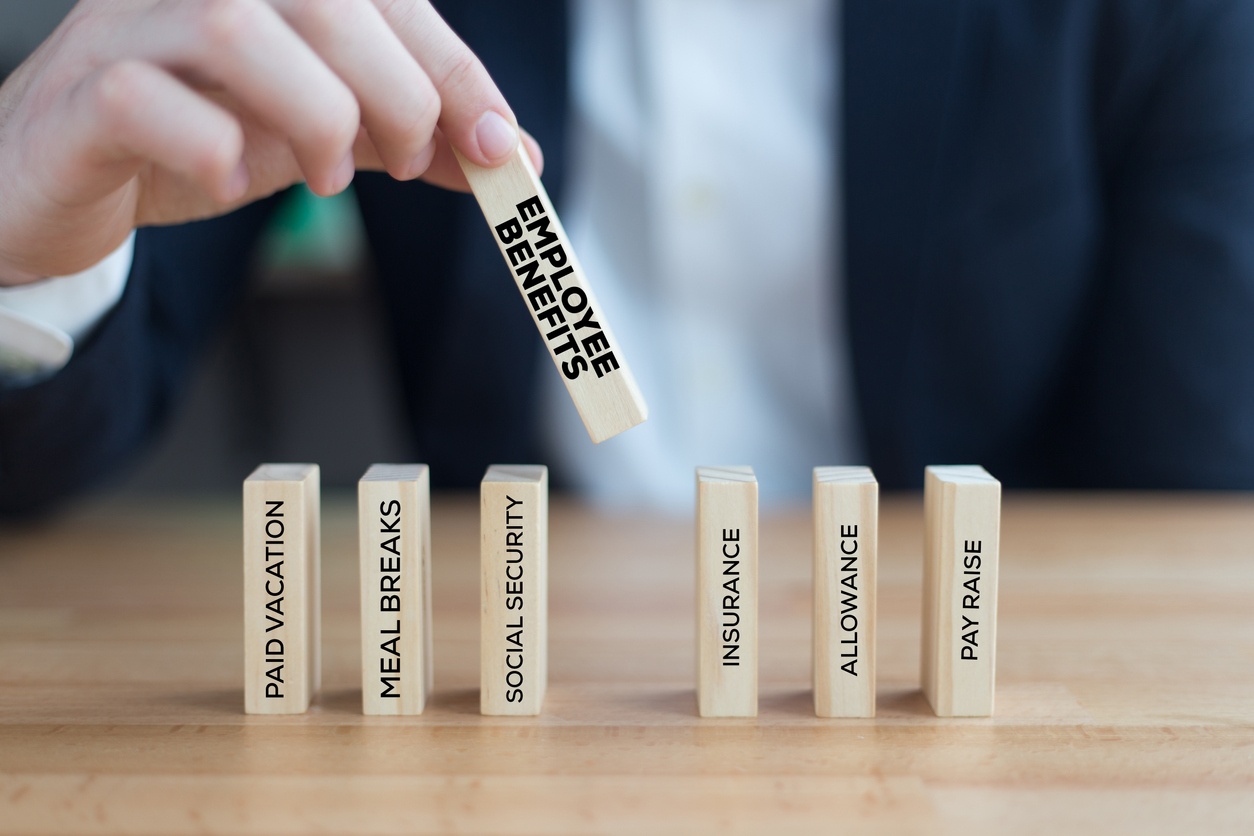Essentials for Designing an Employee Benefits Package

For companies in Sante Fe, an employee benefits package is a costly but necessary expense. Some benefits are mandatory, which means that employers are legally required to provide them to employees. Among the most common mandatory benefits provided by employers are:
- Social Security contributions
- Worker’s compensation
- Unemployment insurance
There are also voluntary benefits that employers may provide at their discretion. These may include the following:
- Medical insurance
- Life and disability insurance
- Retirement income
- Paid time off
- Educational assistance
Whether mandatory or voluntary, benefits go toward the compensation costs of an employer. In some cases, benefits comprise 40% or more of the compensation that companies pay to employees.
Forty percent is a significant amount. But providing a comprehensive benefits package is essential for recruitment and employee retention. By providing an attractive employee benefits package, employers could successfully attract qualified workers and retain valuable personnel.
Because of the need to keep employees happy and the cost of compensation, companies need to design their benefits programs wisely. In addition to meeting their workers’ needs, the benefits package should also address the company’s objectives.
Steps to developing an employee benefits package
Here are the essential steps to designing an employee benefits package that will be advantageous to both employers and employees:
1. Identify your company’s goals and budget
The first step in developing an effective employee benefits package is to identify your goals. Doing so helps you plan out the selection and design of the benefits more methodically.
Remember that your goals should reflect the needs of both the organization and its employees. The plan should therefore be aligned with your overall business and HR strategy. Among the factors to consider are:
- The size of the organization
- Your location
- Your specific area of industry
- Existing collective bargaining agreements
Keep in mind also that the goals aren’t static. They may be subject to evaluation and revision to address employment strategies and your employees’ changing needs.
2. Make a thorough assessment of your employees’ needs
When planning your benefits package, you do need to consider your business objectives and your bottom-line. However, keep in mind that the plan is primarily for the welfare of your employees. You should therefore conduct a thorough assessment of your employees’ requirements in this regard.
Apart from your employees’ benefits needs, consider the benefits practices of other firms in your industry and current tax laws and regulations. It might also be beneficial to conduct market research to get feedback from your workers. This will help ensure that any plan you implement has a good chance of improving employee motivation and increasing job satisfaction.
3. Develop a benefits program
At this point, you should be ready to begin developing your employee benefits package. Refer to the data and information you gathered in the previous steps and formulate a benefits plan according to priority. You could then compare the cost of the plan against the budget you have allotted for providing benefits.
This is perhaps the most time-intensive part of the process, with various factors to consider. Depending on your organization’s scope and the needs you have outlined previously, formulating an effective employee benefits package can be a complex undertaking. Take your time and make sure that the plan addresses everyone’s concerns before you roll it out for implementation.
4. Communicate the details of the plan to your employees
Your work doesn’t end with the development of the employee benefits package. It would be best if you communicate the details of the plan to its beneficiaries: your employees. This equally crucial part of the process is essential for ensuring that your workers are on board with the plan.
It is especially important to let your employees know that the plan was formulated with their needs in mind. In particular, you will want to communicate how their feedback helped develop a benefits program that is specifically tailored to their needs.
5. Evaluate the program periodically to determine its effectiveness
No matter how well-thought-out your plan is, you need to evaluate it periodically to determine its effectiveness. A regular review of the employee benefits package will let you know whether it meets your company’s goals and addresses your workers’ needs.
A periodic evaluation will also enable you to modify the plan based on changing circumstances, whether your own or your employees’. If necessary, you could even conduct regular surveys among your workers and develop an assessment and analysis schedule for periodic evaluation.
About Daniels Insurance, Inc.
At Daniels Insurance, Inc., we have a unique understanding of the risks that businesses like yours face on a regular basis. With the backing of our comprehensive coverages and our dedication to customer service and quick claims resolution, your business will be fully protected. For more information, contact us today at (855) 565-7616.
